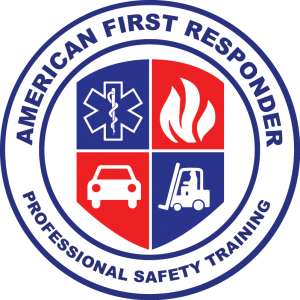Saving Her Broken Heart
The Situation
Did you know that the leading killer among women in the US is not cancer- not breast cancer, not ovarian cancer, not even ALL cancers combined- but Heart Disease. Heart attacks and heart disease are at the top of the list when it comes to medical emergencies fatally afflicting the women of our time.
Shockingly, every minute that passes in the US, another innocent woman dies due to some form of Cardiovascular Disease (CVD). That’s someone’s wife, mother, daughter, sister- whose life was tragically cut short by a silent killer that pervades the women in our society. More than one in three women is currently living with CVD, with numbers breaking down to nearly half of all African-American women being afflicted, and figures closer to 34% for White American women, all according to the AHA. Despite the wonderful new data pointing towards a decline in deaths from heart disease for males over the past 2 decades, unfortunately the numbers have shown no such trend when it comes to female sufferers.
Here are some quick bullet-point statistical facts regarding heart attack and heart disease in women:
- Heart disease is the leading cause of death for women in the United States, killing 289,758 women in 2013—that’s about 1 in every 4 female deaths.
- Although heart disease is sometimes thought of as a “man’s disease,” around the same number of women and men die each year of heart disease in the United States. Despite increases in awareness over the past decade, only 54% of women recognize that heart disease is their number 1 killer.
- Heart disease is the leading cause of death for African American and white women in the United States. Among Hispanic women, heart disease and cancer cause roughly the same number of deaths each year. For American Indian or Alaska Native and Asian or Pacific Islander women, heart disease is second only to cancer.
- About 5.8% of all white women, 7.6% of black women, and 5.6% of Mexican American women have coronary heart disease.
- Almost two-thirds(64%) of women who die suddenly of coronary heart disease have no previous symptoms. Even if you have no symptoms, you may still be at risk for heart disease.
The fact that close to two-thirds of female heart attack-sufferers experience no previous symptoms- and because it’s common for women experiencing the early stages to display seemingly harmless symptoms, like nausea, upset stomach, bloating, and cramping- all together contribute to a situation where many female heart attack sufferers don’t get the appropriate help they need, in the timeframe that they need it.
Even though some women may have no significantly presenting symptoms, others can experience very pronounced angina- which is a dull, heavy or sharp pain in the chest. Pain in the neck, jaw, and back is also relatively common, with abdominal discomfort being especially widespread. These symptoms can occur during stress and physical exertion, or while at rest. They can even be brought on or triggered by sudden mental or emotional stress.

Upon review of patient reports and firsthand accounts, we see women more likely describing chest pain that is sharp and burning- and more frequently having pain in the neck, jaw, throat, back, and abdomen.
Sometimes, heart disease may be entirely silent, and not even diagnosed until a woman actually experiences the event, such as heart attack, cardiac arrhythmia or stroke.
The symptoms may include:
- Heart Attack: Chest pain or discomfort, upper back pain, indigestion, heartburn, nausea/vomiting, extreme fatigue, upper body discomfort, and shortness of breath.
- Arrhythmia: Fluttering feelings in the chest (palpitations).
- Heart Failure: Shortness of breath, fatigue, swelling of the feet/ankles/legs/abdomen.
- Stroke: Sudden weakness, paralysis (inability to move) or numbness of the face/arms/legs, especially on one side of the body. Other symptoms may include: confusion, trouble speaking or understanding speech, difficulty seeing in one or both eyes, shortness of breath, dizziness, loss of balance or coordination, loss of consciousness, or sudden and severe headache.
What increases your risk?
High blood pressure, high LDL cholesterol, and smoking are key risk factors for heart disease. For about half of Americans (49%), at least one of these three risk factors applies.
Several other medical conditions and lifestyle choices can also put people at a higher risk for heart disease, including:
- Diabetes (high sugar levels in blood increase likelihood of blood clotting and plaque formation)
- Overweight and obesity (increased strain on heart muscle)
- Poor diet (high cholesterol)
- Physical inactivity (poor circulation)
- Excessive alcohol use (damages interior lining of vascular passageways like arteries)
What’s being done about all this?
To combat this alarming trend, national groups like the AHA have actually taken tangible steps to spread this knowledge and awareness- helping more women learn to recognize the signs of heart disease within themselves, and equipping more men with the knowledge to recognize these instances when these emergencies occur in the women.
Organizations like the AHA– along with groups like the CDC, FDA, and other Governmental bodies are coming together to implement some of the following laws, provisions, and rules to change this harrowing trend:
- Apply a key provision of the HEART for Women Act that requires the FDA to report on how new prescription drugs and medical devices work in women and minorities.
- Maintain funding for WISEWOMAN, a CDC prevention program that provides cardiovascular screening and lifestyle intervention services to low-income uninsured and under-insured women.
- Protect funding for National Institutes of Health research to better understand how heart disease and other forms of CVD affect women differently.
- Increase the percentage of women who participate in clinical research.
- Preserve Medicare and Medicaid, both of which disproportionately serve women.
- Strengthen the percentage of women with access to affordable health insurance coverage, through support of the Affordable Care Act provision that bans the discriminatory practice of charging women higher insurance premiums than men.
- Increase access to cardiac rehabilitation.
- Report health care quality measures by gender, race, ethnicity, primary language and disability status.
- Support the Health Equity and Accountability Act, which helps eliminate health inequities among minorities, women and other groups.
What can YOU do about this?
- Attend one of our in-person CPR classes to learn additional details regarding these deadly emergencies- including more risk factors to avoid, and additional life-saving steps that we can quickly take, to assist the women in our life.
- Help spread and share information like this blog, and the infographics included within- so that more people can come to know these life-saving tips.
External Links, References, and Resources:
https://www.cdc.gov/dhdsp/data_statistics/fact_sheets/fs_women_heart.htm
https://millionhearts.hhs.gov/
https://www.cdc.gov/wisewoman/
http://www.heart.org/HEARTORG/
- Xu, JQ, Murphy, SL., Kochanek, KD, Bastian, BA. Deaths: Final data for 2013[PDF-7.3M]. National Vital Statistics Report. 2016:64(2).
- Mosca L, Mochari-Greenberger H, Dolor RJ, Newby LK, Robb KJ. Twelve-year follow-up of American women’s awareness of cardiovascular disease risk and barriers to heart health. Circulation: Cardiovascular Quality Outcomes. 2010;3:120-7.
- Heron M. Deaths: Leading causes for 2008[PDF-2.7M]. National vital statistics reports. 2012;60(6).
- Roger VL, Go AS, Lloyd-Jones DM, Benjamin EJ, Berry JD, Borden WB, et al. Heart disease and stroke statistics—2012 update: a report from the American Heart Association. Circulation. 2012;125(1):e2–220.
- CDC. Million Hearts: strategies to reduce the prevalence of leading cardiovascular disease risk factors. United States, 2011. MMWR2011;60(36):1248–51.
- National Heart, Lung and Blood Institute. What Are the Signs and Symptoms of Heart Disease? [cited 2013 July 19, 2013]; Available from: www.nhlbi.nih.gov/health/health-topics/hdw/signs.html.
- National Heart Lung and Blood Institute. What are the Signs and Symptoms of a Stroke? [cited 2013 July 19, 2013]; Available from: www.nhlbi.nih.gov/health/health-topics/topics/stroke/signs.html.
- U.S. Department of Health and Human Services, Office on Women’s Health. Heart Disease: Frequently Asked Questions. 2009. [cited 2013 July 19, 2013]; Available from: http://www.womenshealth.gov/publications/our-publications/fact-sheet/heart-disease.pdf[PDF-1.7M].




 American First Responder
American First Responder
